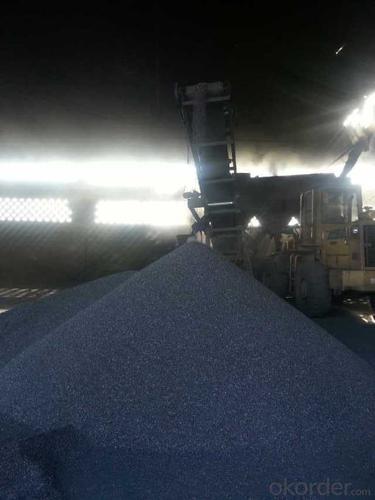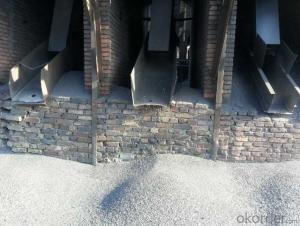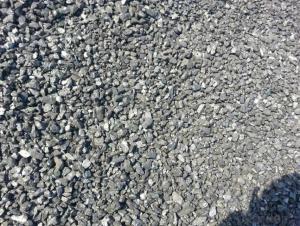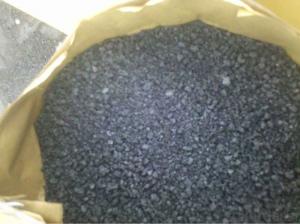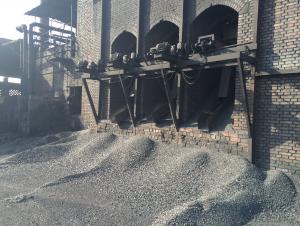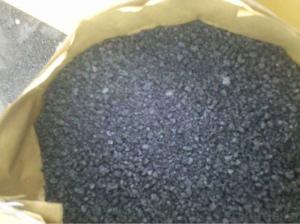Calcined Anthracite FC90% CNBM China Product
- Loading Port:
- Tianjin
- Payment Terms:
- TT OR LC
- Min Order Qty:
- 0 m.t.
- Supply Capability:
- 100000 m.t./month
OKorder Service Pledge
OKorder Financial Service
You Might Also Like
Packaging & Delivery
| Packaging Detail: | 25kgs/50kgs/1ton per bag or as buyer's request |
| Delivery Detail: | Within 20 days after receiving corect L/C |
Feature
All of our goods are made in the best quality of world famous Tianjin. All of our products are with High carbon, Low ash, low sulphur, Low Moisture.
Specifications
Calcined Anthracite
Fixed carbon: 90%-95%
S: 0.5% max
Size: 0-3. 3-5.3-15 or as request
Calcined Anthracite is produced using the best Anthracite-Taixi Anthracite with low S and P, It is widely used in steel making and casting.
General Specification of Calcined Anthracite:
PARAMETER UNIT GUARANTEE VALUE | |||||
F.C.% | 95MIN | 94MIN | 93MIN | 92MIN | 90MIN |
ASH % | 4MAX | 5MAX | 6MAX | 7MAX | 8MAX |
V.M.% | 1 MAX | 1MAX | 1.5MAX | 1.5MAX | 1.5MAX |
SULFUR % | 0.5MAX | 0.5MAX | 0.5MAX | 0.5MAX | 0.5MAX |
MOISTURE % | 0.5MAX | 0.5MAX | 0.5MAX | 0.5MAX | 0.5MAX |
Size can be adjusted based on buyer's request.
Pictures of Calcined Anthracite:
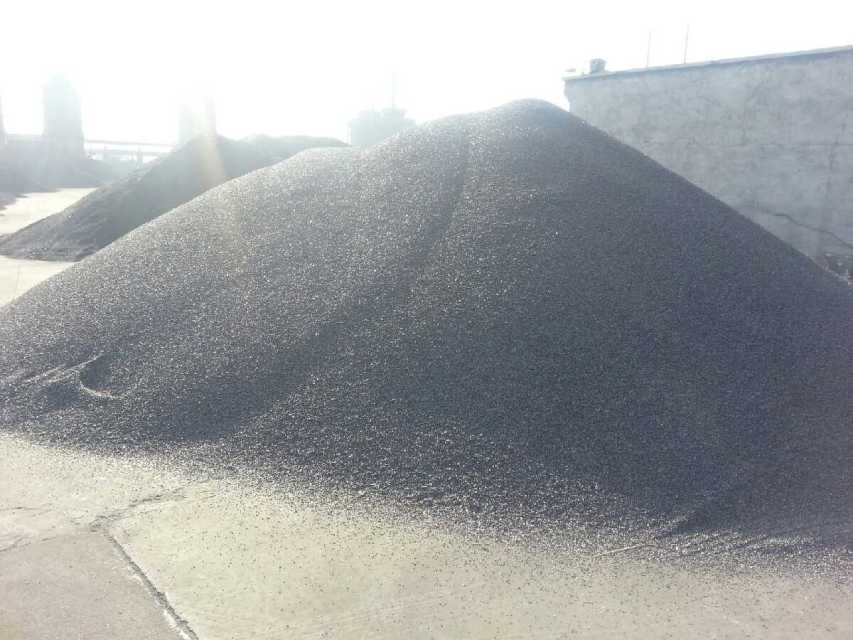
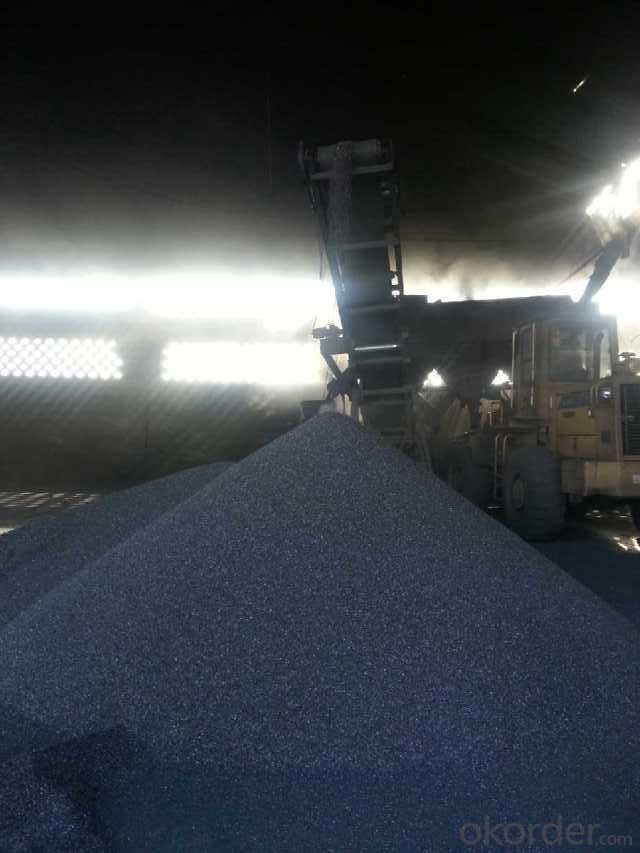
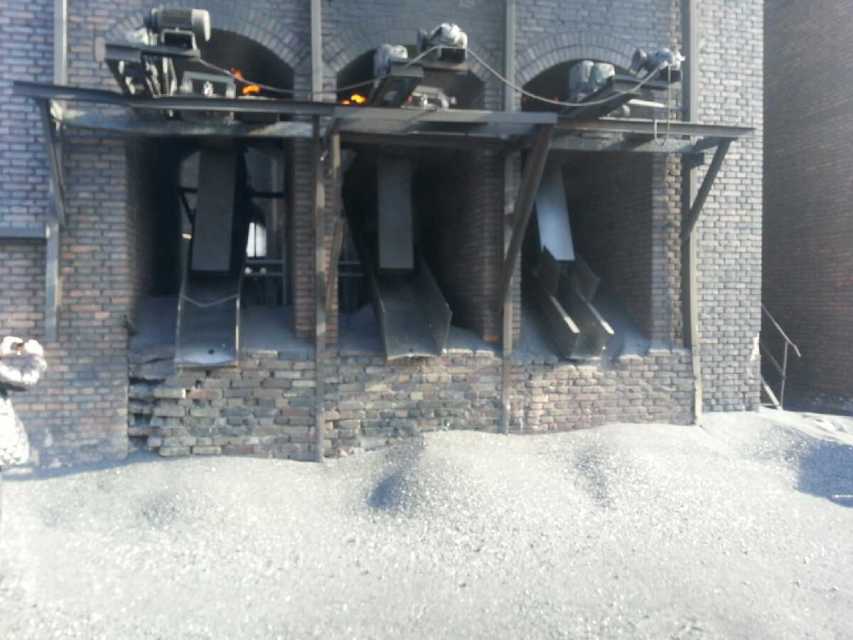
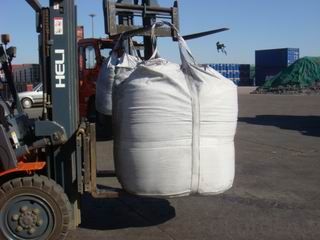
We can supply below furnace charges, please feel free to contact us if you areinterested in any of any of them:
Coke (Metallurgical, foundry, gas)
Calcined Anthracite with fixed carbon from 90% to 95%
Calcined Petroleum Coke
- Q: What are the impacts of carbon emissions on the stability of polar ice caps?
- Carbon emissions have significant impacts on the stability of polar ice caps. The primary cause of these emissions is the burning of fossil fuels, which releases large amounts of carbon dioxide into the atmosphere. As a greenhouse gas, carbon dioxide traps heat and contributes to global warming and climate change. This, in turn, leads to the melting of polar ice caps. The ice caps in the polar regions are highly sensitive to changes in temperature. As the Earth's temperature rises due to increased carbon emissions, the polar ice caps experience accelerated melting. This causes a rise in sea levels, which has consequences for coastal regions worldwide. Rising sea levels can lead to increased flooding, erosion, and the loss of valuable coastal ecosystems. Moreover, the stability of polar ice caps is crucial for maintaining the Earth's climate balance. The ice caps reflect sunlight back into space, acting as a natural cooling mechanism for the planet. As they melt, less sunlight is reflected, and more is absorbed by the Earth's surface, exacerbating the warming effect. This creates a feedback loop, where the melting of ice caps leads to further warming, causing even more ice to melt. The impacts of carbon emissions on polar ice caps are not limited to rising sea levels and climate change. The loss of ice also affects the delicate balance of ecosystems in these regions. Polar ice caps provide habitat and a food source for a diverse range of organisms, including polar bears, seals, and various species of birds. The melting of ice disrupts these ecosystems, leading to declines in wildlife populations and potential extinctions. Moreover, the melting of polar ice caps also affects global ocean currents and weather patterns. The cold, dense water that forms from melting ice sinks to the bottom of the ocean and drives important oceanic circulation patterns. Changes in these patterns can have far-reaching consequences, including altering the distribution of marine species, impacting fisheries, and influencing regional climates. To mitigate the impacts of carbon emissions on polar ice caps, it is crucial to reduce greenhouse gas emissions and transition to cleaner and renewable energy sources. International efforts, such as the Paris Agreement, aim to limit global warming and reduce carbon emissions to prevent further ice cap melting. Additionally, supporting research and monitoring programs in polar regions can help us better understand these complex systems and develop effective strategies for their conservation.
- Q: How does carbon affect the stability of ecosystems?
- The stability of ecosystems is heavily dependent on carbon balance in the environment. Carbon serves as a crucial foundation for organic matter and is stored in various forms such as plants, animals, soil, and the atmosphere. This storage process aids in regulating the carbon cycle, which is vital for maintaining a stable climate. The role of carbon in climate regulation is one of the primary ways it influences ecosystem stability. Carbon dioxide, a greenhouse gas, has the ability to trap heat in the atmosphere, contributing to global warming. Human activities, including the burning of fossil fuels, deforestation, and changes in land use, have resulted in excessive carbon emissions and an increase in atmospheric carbon concentration. This has led to an intensified greenhouse effect, resulting in rising temperatures and climate change. The consequences of climate change extend far and wide, affecting ecosystems in various ways. It can disrupt the delicate balance by altering temperature and precipitation patterns, impacting habitats, and changing the timing of seasonal events. These alterations can lead to a loss of biodiversity as certain species struggle to adapt to the new conditions. Additionally, climate change can also affect the availability of crucial resources like water and food, which are essential for ecosystem functionality and stability. Moreover, the excessive release of carbon into the atmosphere can directly harm ecosystems. Elevated carbon emissions cause acid rain, which can acidify water bodies, rendering them unsuitable for aquatic life. Increased carbon dioxide levels in the oceans can also lead to ocean acidification, negatively impacting marine organisms such as corals and shellfish. On the other hand, carbon is indispensable for the health and productivity of ecosystems. Carbon-rich organic matter in the soil aids in nutrient retention, improves soil structure, and enhances water-holding capacity. This facilitates better plant growth and supports the overall functioning of ecosystems. In conclusion, carbon exerts a significant influence on the stability of ecosystems. While it is necessary for the growth and development of living organisms, excessive carbon emissions and climate change pose substantial threats to ecosystem balance and functionality. It is vital to reduce carbon emissions, promote sustainable practices, and safeguard carbon sinks like forests and wetlands to ensure the long-term stability of ecosystems.
- Q: Benefits of reducing carbon emissions
- The researchers then extracted 4 ice ages from 500 to 140 thousand years from Greenland, which resulted in the discovery of TOMV virus in the ice. Researchers say the surface of the virus is surrounded by solid proteins, so it can survive in adversity.The new findings that researchers believe that a series of influenza, polio and smallpox epidemic virus may be hidden in the depths of the ice, the human of the original virus had no ability to resist, when global temperatures rise to ice melting, the ice buried virus in the thousand or more may be raised, forming the epidemic. The scientists said, although they do not know the survival of the virus of hope, or the opportunity to re adapt to the ground environment, but the possibility certainly can not deny the virus back.
- Q: What are the impacts of carbon emissions on water scarcity?
- Water scarcity is significantly impacted by carbon emissions. One way in which carbon emissions contribute to water scarcity is through climate change. The presence of increased carbon dioxide in the atmosphere causes heat to become trapped, resulting in global warming and changes in weather patterns. These altered climate patterns can lead to changes in rainfall, including more frequent droughts and decreased rainfall in certain areas. The consequences of droughts can be particularly severe for water availability. When there is a lack of rainfall, rivers, lakes, and reservoirs can dry up, leaving communities without access to fresh water sources. This scarcity of water affects drinking water, agriculture, and industrial use, impacting both human populations and ecosystems. Moreover, carbon emissions also affect water scarcity by impacting the melting of glaciers and snowpack in mountainous regions. These areas serve as natural water reservoirs, releasing water slowly throughout the year and providing a reliable source of freshwater downstream. However, as temperatures rise due to carbon emissions, glaciers and snowpack melt at a faster rate. This leads to increased water runoff, resulting in flooding and a decrease in water availability during dry seasons. Carbon emissions also indirectly contribute to water scarcity through their influence on sea-level rise. The increased temperatures caused by carbon emissions cause polar ice caps to melt, which in turn raises sea levels. Consequently, saltwater infiltrates coastal aquifers, making the groundwater brackish or undrinkable. This intrusion contaminates freshwater sources, reducing their availability and exacerbating water scarcity. Additionally, carbon emissions contribute to ocean acidification, which harms marine ecosystems. This, in turn, affects the availability of seafood resources, which are an essential source of protein for many people worldwide. The decline in seafood availability puts additional pressure on freshwater resources as it may lead to increased reliance on agriculture, which requires substantial amounts of water. To summarize, carbon emissions have significant impacts on water scarcity. Climate change resulting from carbon emissions alters precipitation patterns, leading to droughts and reduced rainfall. Carbon emissions also accelerate the melting of glaciers and snowpack, reducing water availability in mountainous regions. Furthermore, carbon emissions contribute to sea-level rise, resulting in saltwater intrusion into freshwater sources. These impacts emphasize the urgent need to reduce carbon emissions and mitigate the effects of climate change to ensure the availability of freshwater resources for present and future generations.
- Q: What's the difference between coal and carbon?
- Coal is the main component of carbon, carbon in addition to coal, as well as graphite, diamonds and so on
- Q: Stability, primary carbon, two carbon, three carbon, four carbon
- From a variety of hydrogen is substituted alkyl free radicals generated in terms of difficulty order can have free radicals for the formation of tertiary carbon free radical secondary carbon free primary carbon free radicals. Alkyl radicals generated methyl easily, can be explained from two aspects: (1) different required to form free radicals when the fracture of C-H the energy, the (CH3) 3C-H fracture, the energy required for the smallest, most easily generated.
- Q: What is carbon neutral energy?
- Carbon neutral energy refers to energy sources and systems that do not produce any net carbon dioxide emissions, meaning they have a neutral impact on the environment in terms of greenhouse gas emissions. This can be achieved through various methods, such as using renewable energy sources like solar, wind, or hydro power, or by implementing carbon capture and storage technologies to offset any emissions produced. The goal of carbon neutral energy is to mitigate climate change and promote sustainable energy practices.
- Q: What are the different types of carbon-based concrete additives?
- There are several different types of carbon-based concrete additives that can enhance the performance and properties of concrete. These additives are primarily derived from carbon-based materials and can be categorized into three main types: carbon nanotubes, graphene, and carbon fibers. 1. Carbon Nanotubes: These are cylindrical structures made up of carbon atoms arranged in a unique hexagonal pattern. Carbon nanotubes have exceptional mechanical and electrical properties, making them highly desirable as concrete additives. When added to concrete, they can improve its strength, durability, and toughness. Carbon nanotubes also enhance the electrical conductivity of concrete, which is beneficial for applications such as self-healing concrete and anti-static flooring. 2. Graphene: Graphene is a single layer of carbon atoms arranged in a two-dimensional lattice. It is known for its exceptional strength, high electrical conductivity, and excellent barrier properties. When incorporated into concrete, graphene can significantly improve its mechanical properties, such as compressive strength, flexural strength, and abrasion resistance. It also enhances the durability and impermeability of concrete, providing resistance against water and chemical ingress. 3. Carbon Fibers: These are long, thin strands of carbon, typically derived from organic polymers such as polyacrylonitrile or pitch. Carbon fibers possess excellent tensile strength and are widely used as reinforcements in various construction materials, including concrete. When added to concrete, carbon fibers can enhance its flexural strength, impact resistance, and cracking behavior. They also improve the ductility and toughness of concrete, making it more resistant to dynamic loads. It is worth noting that each type of carbon-based concrete additive has its unique advantages and applications. Carbon nanotubes offer exceptional mechanical and electrical properties, graphene provides enhanced strength and barrier properties, while carbon fibers enhance flexural strength and impact resistance. The choice of additive depends on the specific requirements of the concrete application and the desired performance characteristics.
- Q: What are the main sources of carbon on Earth?
- The main sources of carbon on Earth are both natural and anthropogenic (caused by human activity). In terms of natural sources, carbon is present in the Earth's atmosphere in the form of carbon dioxide (CO2), which is released through natural processes such as volcanic eruptions, respiration by plants and animals, and the decay of organic matter. Carbon is also found in the Earth's lithosphere in the form of carbonate rocks, such as limestone and dolomite, which are formed from the shells and skeletons of marine organisms. Anthropogenic sources of carbon are primarily associated with the burning of fossil fuels, such as coal, oil, and natural gas, for energy production and transportation. When these fossil fuels are burned, carbon dioxide is released into the atmosphere, contributing to the greenhouse effect and climate change. Deforestation and land-use changes also release carbon stored in trees and vegetation into the atmosphere. Additionally, human activities like industrial processes, cement production, and waste management contribute to the emission of carbon dioxide and other greenhouse gases. These activities release carbon that has been locked away for millions of years, significantly altering the natural carbon cycle. Overall, while carbon is naturally present on Earth, human activities have significantly increased its release into the atmosphere, leading to concerns about climate change and the need for sustainable practices to reduce carbon emissions.
- Q: What is the difference between carbon nanomaterials and nano carbon materials?
- Carbon nanomaterials are a general term for carbon nanotubes, carbon nanofibers, and so on. Therefore, there are differences and connections between these two statements.
Send your message to us
Calcined Anthracite FC90% CNBM China Product
- Loading Port:
- Tianjin
- Payment Terms:
- TT OR LC
- Min Order Qty:
- 0 m.t.
- Supply Capability:
- 100000 m.t./month
OKorder Service Pledge
OKorder Financial Service
Similar products
Hot products
Hot Searches



